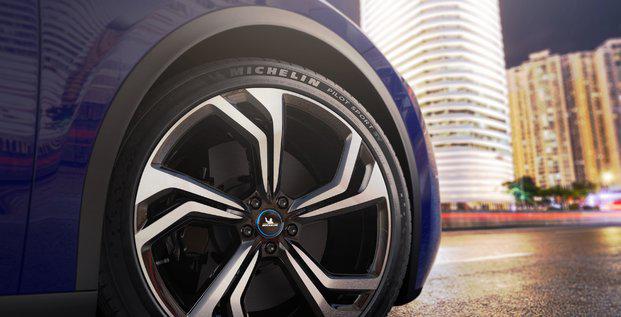Electric car, act 2? French automakers are preparing to roll out a second phase of their electrification plan. Renault will present its roadmap on June 30, while the Stellantis group will devote a day to launching an electrification strategy a week later. For the entity born from the merger between the PSA and FCA groups, this will be the first part of the strategy of its chairman of the management board, Carlos Tavares, since the birth of the group last January.
The Tesla model
For the two French groups, it is a question of giving a boost to electromobility, at a time when the market has completely changed its paradigm in this area. Manufacturers have moved from a range strategy (launch of several electric models) to ecosystem logic. Volkswagen has thus announced a 35 billion euro plan which would make it an upstream (battery production) and downstream (deployment of charging networks) player. A real historic break in the automotive industrial model, accustomed to business specialization.
Read also Automotive: the acceleration of the electric revolution puts the sector in danger
In fact, the German juggernaut which disputes with Toyota the title of world number one of the automobile, adopts the industrial model of Tesla. The advent of the electric car is not only reshuffling the cards of the best-positioned players, it is turning the entire industrial value chain upside down. For the French groups, it is a question of providing a malignant response, because it is obvious that neither one nor the other has the financial base of the German group.
New Gigafactories
It is possible that the two groups work mainly in the form of partnerships or joint ventures. Stellantis had hoped for a time that Renault would join the ACC consortium that it formed with Saft (Total group) and which should mass-produce electric batteries in order to lower the unit cost. Despite the promise made to the State during the guaranteed loan of 5 billion granted in the spring of 2020, the diamond brand preferred to turn to a Chinese group to create a competing joint venture with a factory in the North of France.
Read also Why Volkswagen is adopting Tesla's revolutionary model in the electric car

At the General Meeting of Stellantis shareholders, Carlos Tavares indicated that after the gigafactory in Douvrin (Northern France) and Kaiserslautern (Germany), it would be necessary to build other similar sites, particularly in South America. North. The two sites under construction will have a capacity of 50GWh, but Stellantis expects a demand of 130 GWh in 2025 and 250 in 2030.
The other aspect concerns the charging networks. The economic model is still different, since it involves civil engineering and the management of electrical infrastructures... It is unlikely that the two groups will decide to invest in this new profession. They could instead work on partnerships to ensure better charging coverage with multi-network solutions.
End of multi-energy platforms
We should also expect announcements on the launch of dedicated platforms. Stellantis could thus announce a platform specifically dedicated to 100% electric cars. Until now, PSA had adapted its CMF and EMP2 platform to accommodate electric batteries. This so-called multi-energy solution has a major economic interest but remains a brake on the performance of electric models. There will therefore be several families of models, contrary to the initial choice of Carlos Tavares. With Stellantis, Carlos Tavares goes from 4 to 8 million cars per year thanks to the brands of the Fiat Chrysler group.
Read also Stellantis: Carlos Tavares finally believes in the electric automobile revolution
On the Renault side, the challenge is to go further in the range strategy. If the Zoé has long been the best-selling electric car in Europe, it is now closely followed by Volkswagen's ID.3 and Tesla's Model 3. The diamond mark is behind and must therefore catch up. The Zoé will be replaced in 2024 by the electric R5, and a larger range should follow. Investors will wait for announcements regarding synergies with Nissan and Mitsubishi, Renault's allies. Historically, the electrical issue of the Alliance has always crystallized rivalries. Thus, the French had refused to buy its batteries from the Japanese who manufactured them (Nissan has since sold this division), preferring then to turn to LG. With between 9 and 10 million cars per year, the Alliance has every interest in pooling its resources to gain in competitiveness.
100% electric brands
The two groups could also announce the conversion of entire brands to 100% electric. Luca de Meo announced in January that Alpine would be entirely electric. Recently, there have been rumors that Fiat will also switch to an exclusively electric range in 2030.
Finally, it will be necessary to rule on the solutions around hybridization which are increasingly criticized by environmental associations, local authorities and authorities. The rechargeable hybrid, for example, is increasingly frowned upon because it is heavier and emits a lot of CO2 when it is not recharged. Other so-called light hybridization solutions such as 48 volts could also be part of the range strategies.
The options are numerous for the two French car manufacturers, they are especially crucial at a time when the electrification of the market has greatly accelerated since the Covid crisis.
Nabil Bourassi5 mins
Share :
DIRECT. Assassination of Razia Askari in Besançon: "No guilt, no remorse, lack of empathy", the profile of Rashid Askari, accused of the assassination of his wife, dissected
[Video] The Amazing Spider-Man 2: the ultimate trailer
Samsung AU9000 Test | TechRadar
Nantes. He had assaulted a tram driver: sentenced to 6 months, he avoids prison